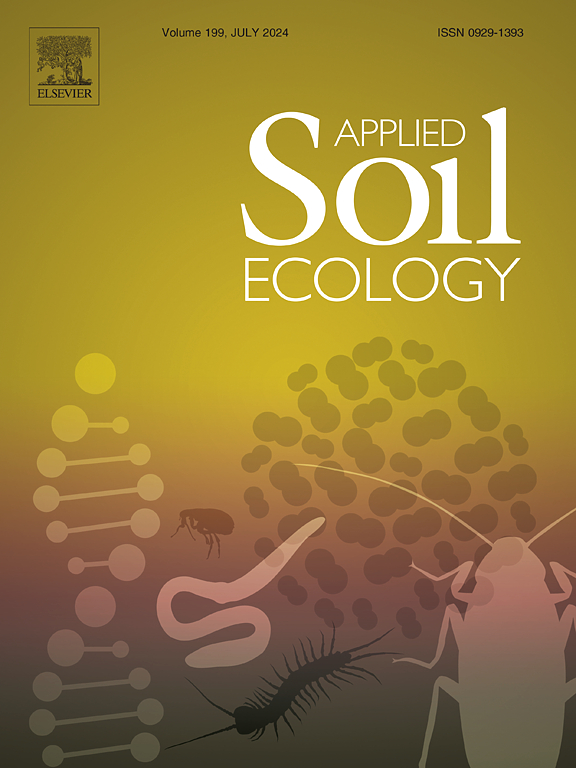Increased carbon sequestration of different straw return depths varies temporally
IF 4.8
2区 农林科学
Q1 SOIL SCIENCE
引用次数: 0
Abstract
Straw return strategies are widely used to increase soil organic carbon (SOC) sequestration and alleviate climate change, depending on the involvement of microorganisms. However, the dynamic response of SOC sequestration to continuous straw return is still unclear, especially considering the complex interactions between microbial community composition, functional genes, and SOC components. A continuous field experiment was monitored in 2021–2022 to investigate the dynamics effects of straw management practices, including shallow return (SF), mulch return (MF), deep return (DF) treatments, and no straw return (CK), on microbial r and K strategies, carbon cycle genes (carbon degradation and fixation), and soil humus. The microbial r-strategists (Proteobacteria and Bacteroidota) and carbon cycle genes in the subsoil exhibited differential response to the 2-years between SF and DF treatments, with DF being lower in 2021 but significantly higher in 2022 than SF. The higher carbon cycle genes in DF compared with SF, MF and CK treatments in the subsoil in 2022 were associated with the highest microbial r/K strategy ratio, which had a value of 3.9. The subsoil humic acid (HA) and humin (HU) content in 2021 were increased by 9.3 %–11.9 % and 10.4 %–22.8 % in SF compared with DF, MF and CK treatments. However, in the subsoil in 2022, SOC, HA and HU content in DF were significantly higher by 14.9 %–24.4 %, 5.7 %–25.2 % and 15.0 %–30.5 %, compared with SF, MF and CK treatments respectively. Partial least-squares pathway modeling also confirmed that increased HU content and carbon fixation genes abundance were the direct cause of the observed enhanced SOC. Therefore, over long-time scales, the DF method is likely the most beneficial straw management for SOC sequestration, soil nutrients and biological properties and optimally contributing to global sustainable agriculture development goals.

求助全文
约1分钟内获得全文
求助全文
来源期刊

Applied Soil Ecology
农林科学-土壤科学
CiteScore
9.70
自引率
4.20%
发文量
363
审稿时长
5.3 months
期刊介绍:
Applied Soil Ecology addresses the role of soil organisms and their interactions in relation to: sustainability and productivity, nutrient cycling and other soil processes, the maintenance of soil functions, the impact of human activities on soil ecosystems and bio(techno)logical control of soil-inhabiting pests, diseases and weeds.
 求助内容:
求助内容: 应助结果提醒方式:
应助结果提醒方式:


